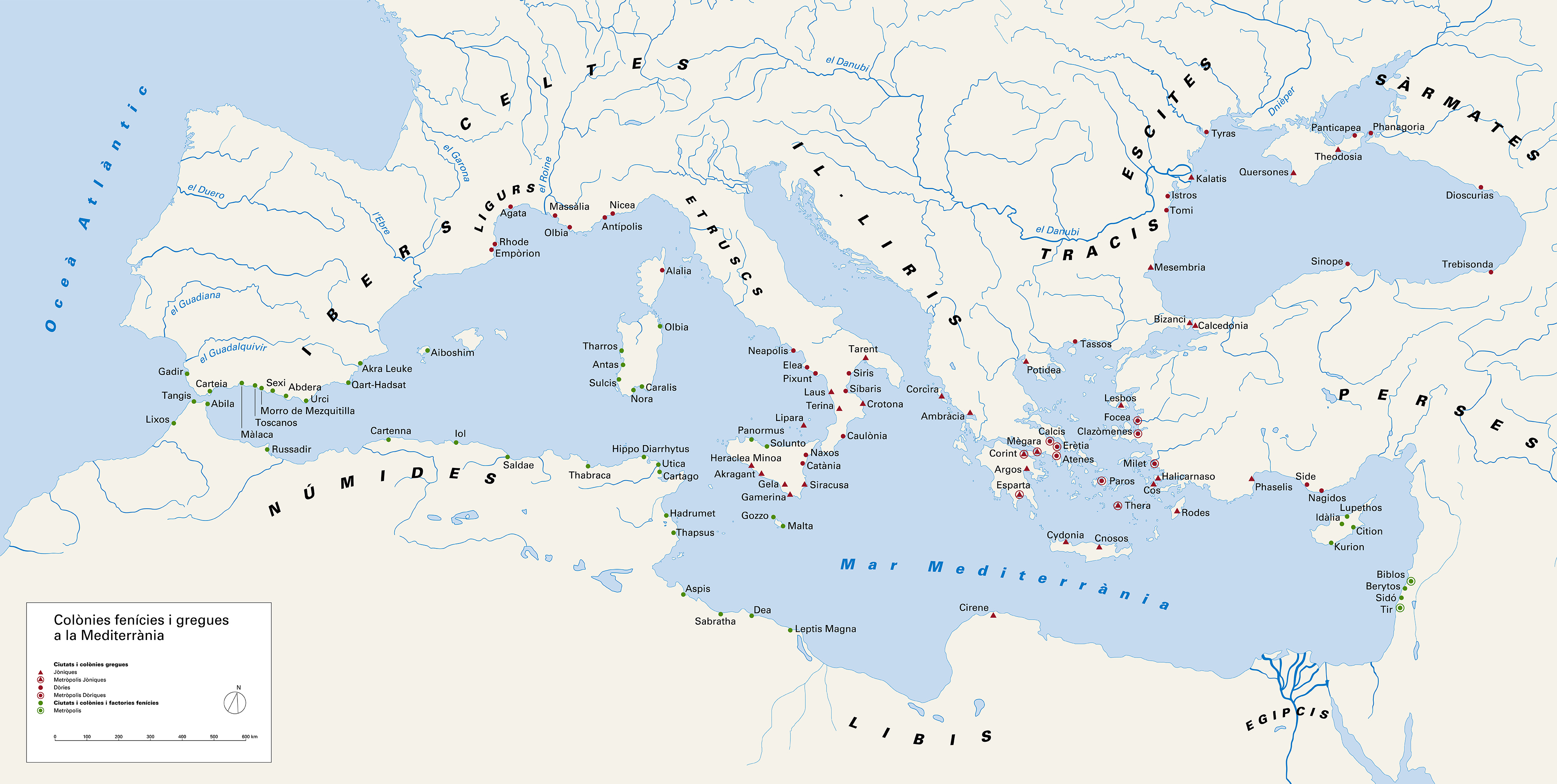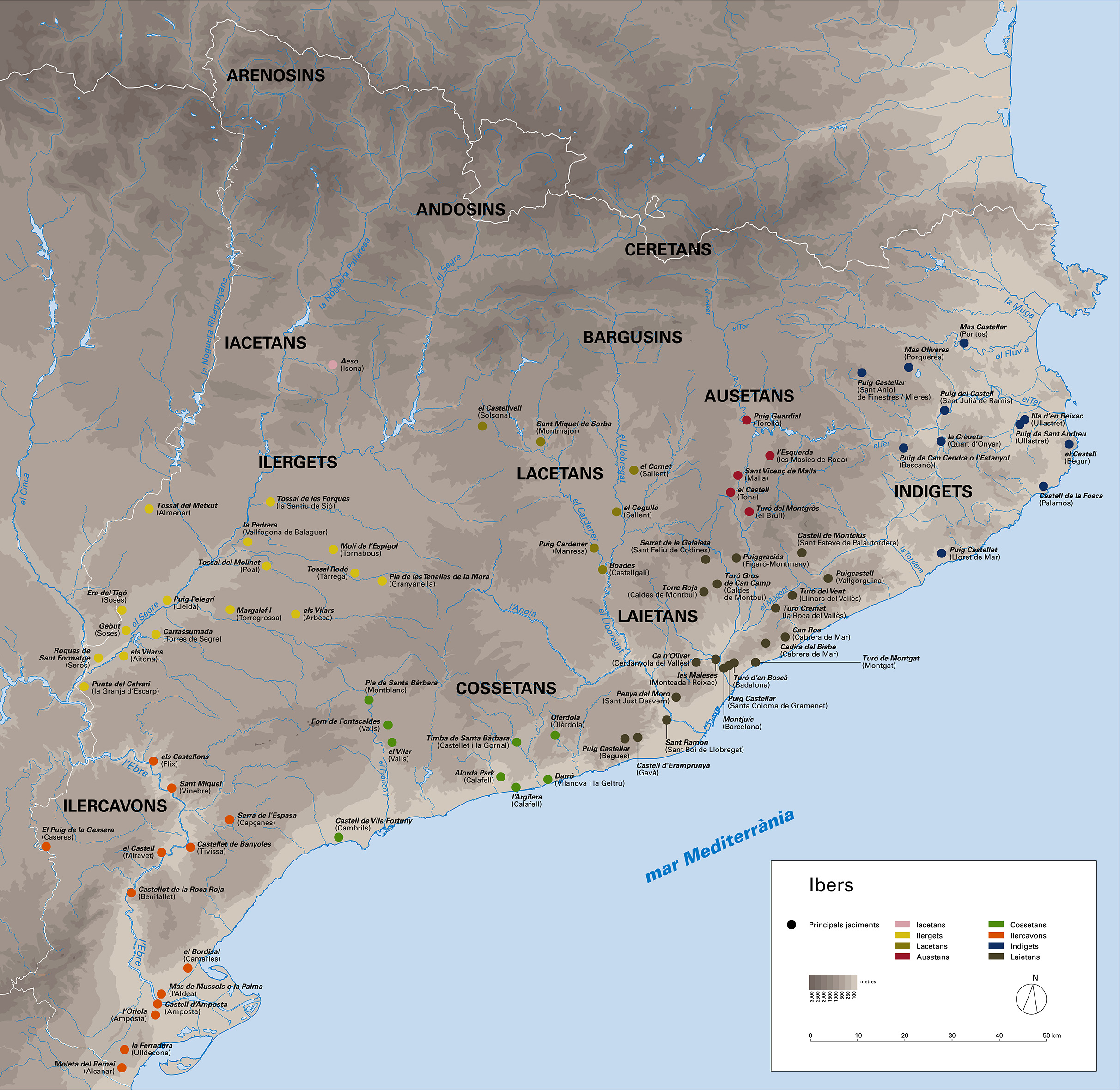The memory of a country
Roots
There is evidence of human activity in Catalonia since the earliest periods of prehistory. Catalonia, on the western edge of the Mediterranean, forms a corridor along which a wide variety of cultures have travelled and settled.
After the Neolithic period, the spread of agriculture and stock farming promoted the appearance of increasingly complex societies. From the 7th century BC onwards, the influence of eastern peoples, such as the Greeks and the Phoenicians, crystallised in the Iberian culture: one of the most fascinating Iron-Age civilisations.
The coming of the Romans in 218 BC began a long period of cultural and political integration that shaped some of the characteristic features of our society. The fall of the Roman Empire, in the 5th century, gave way to the establishment of the Visigothic Kingdom, which ended up taking over the whole Iberian Peninsula.

Prehistory
We do not know precisely when the first humans came to our land, but we have found evidence going back more than 450,000 years. From the Lower Palaeolithic to the Neolithic, we can follow the trail shaping the human condition: making tools, controlling fire, capacity for communication and the conception of a cosmology to explain life and death.
The nomadic groups of hunter-gatherers who lived in caves have left us their paintings and engravings. With the spread of agriculture and stock farming, the first settlements appeared, evolving by the dawning of the Bronze Age to become complex societies. It was a long period full of episodes fundamental for the human race, but we still have much to discover about it.
Chronology
Lower Palaeolithic
Lower Palaeolithic cultures. First hominids of the genus Homo erectus. They could produce tools by hitting one stone against another to change its shape so that it could be used for butchery.
Middle Palaeolithic
Middle Palaeolithic cultures. Homo neanderthalensis. The control and use of fire became widespread.
Upper Palaeolithic
Upper Palaeolithic cultures. Homo sapiens was responsible for new technical acquisitions such as the sling and, later, the bow and arrow. The first evidence of symbolic representations appeared, painted on walls and pebbles.
Epipalaeolithic
Epipalaeolithic cultures. End of the Ice Ages.
Early Neolithic
Early or cardial Neolithic cultures. First cereal and legume crops and first domesticated animals.
Middle Neolithic
Middle and late Neolithic cultures.
Megalithic Culture: 2,500-1,700 BC
Megalithic culture. First copper and bronze objects.
Hand mill
Herramientas de sílex
Between the European continent and the Mediterranean
During the late Bronze Age (1,250-700 BC), the communities settled on Catalan territory began a period of great social, economic and cultural transformation. These changes were related to waves of migration from central Europe and the establishment of trading networks between the communities on either side of the Pyrenees.
After the beginning of the Iron Age (700-550 BC), contacts with the peoples of the eastern Mediterranean area (Phoenicians and Greeks) promoted and stimulated the economic, technological and cultural development of the indigenous groups. The development that occurred during this time was decisive in consolidating the Iberian culture.
Barranc de Gàfols hut







Mud brick houses


Everyday life

Map of Phoenician and Greek colonies
The Iberians
The Iberian culture developed from the 6th century in a huge region in the western Mediterranean. The Iberians were a set of diverse peoples sharing a series of common cultural features. Like the Greeks and Etruscans, they were a complex, developed civilisation with urban and trade networks, minting coins and using their own writing system applied to their native language.
The knowledge we have of the Iberian civilisation has been continually growing in the last few years. The archaeological sites we find in Catalonia, like the one at Ullastret, show us a complex society that had mastered ironwork and maintained trading contacts with other Mediterranean peoples, especially the Carthaginians and the Greeks. These contacts intensified when, in about 580 BC, Greeks from Masalia (Marseille) founded the colony of Empúries on the Catalan coast.
Rotating mills







Grinding

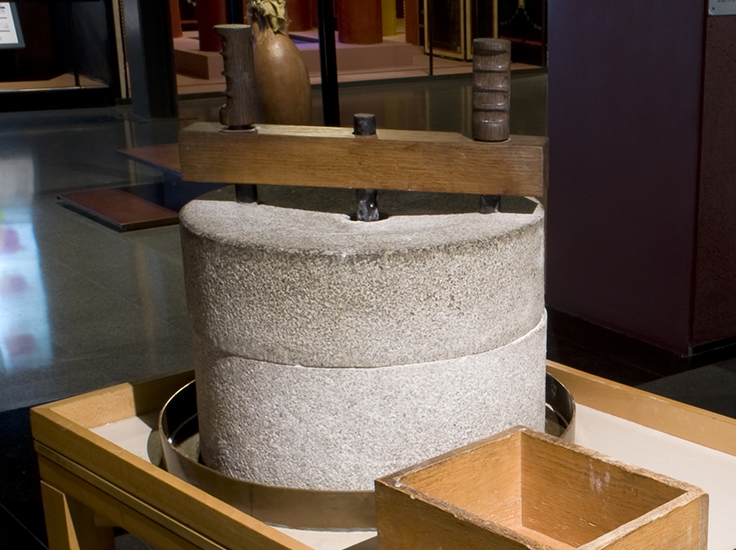
Technological change

Map of the Iberian sites
The era of Rome
In 218 BC, during the Second Punic War, the Roman army disembarked in the allied city of Empúries. Once they had defeated the Carthaginians, their great rivals in the western Mediterranean, the Romans established themselves in the Iberian Peninsula, beginning a long period of domination. The various rebellions of the native people were repressed and Iberian society gradually assimilated Romanisation.
The Romans structured the territory into provinces and build roads connecting the main settlements. Tarraco became the most important city in Hispania. Many colonists from the Italian Peninsula and the Hellenistic Mediterranean settled there. The Latin language and culture took root and mixed with the local cultures, laying the basis for a new society.
Chronology
Arrival Of The Romans
The Roman army disembarked at Empúries to try to prevent the Carthaginian Hannibal from crossing the Pyrenees on his way to Italy during the Second Punic War. This date marks the beginning of the Romanisation process on the Iberian Peninsula.
Iberian Revolts
The Iberian revolts against Roman control, beginning in 206 BC, ended with the death of Indibilis and Mandonius, chiefs of the Ilergetes and the Ausetani respectively.
Second Punic War
Final de la segona guerra púnica. Els cartaginesos han de cedir totes les seves colònies a Hispania; Roma pot començar la ocupació i explotació dels recursos de tota la Península Ibèrica.
Territorial Division
Division of the territory controlled by Rome into two provinces: Hispania Citerior, with its capital at Tarraco, and Hispania Ulterior, with its capital at Corduba.
Celti-Iberian Wars
The first and second wars between Rome and the Celti-Iberian tribes consolidated the Romans’ effective control of the territories in the central Iberian Peninsula.
Death Of Viriathus
Final confrontation between Rome and the Lusitanian people. The death of Viriathus marked the end of the conflict.
Caesar Against Pompey
Julius Caesar came to Ilerda (modern Lleida) to personally direct the confrontation with Pompey’s generals.
Beginning of The Roman Empire
Beginning of the Roman Empire with the granting of the title Augustus to Octavian. Augustus established the administrative division of Hispania into three provinces – Baetica, Lusitania and Tarraconensis – and established his temporary residence in Tarraco to direct the wars against the Cantabrians and Asturians.
End of the conquest of Hispania
The Romans finally defeated the Cantabrians and the Asturians. This is considered to be the date of the completion of the conquest of Hispania.
Roman law
Vespasian granted all Hispania the ius Latii (law of Latin citizenship).
Reign of Trajan
Reign of Trajan, the first emperor born in Hispania.
Germanic invasions
After various incursions, the Franks reached the Ebro, causing the disappearance of many inhabited settlements. Barcino was forced to build a circuit of walls and Tarraco was destroyed.
Model of Tarraco
Discover a sunken ship







The Culip IV


The cargo

Christian Rome
In the 3rd and 4th centuries, the borders of the Roman Empire were no longer secure and there were frequent economic and social crises. Christianity, a monotheistic religion of Eastern origin, displaced the traditional beliefs. After an attempt at repression, the Emperor Constantine made it legal to practise the religion and, in 380, Theodosius I (the Great) proclaimed Christianity as the official religion of the Roman Empire.
The Catholic Christians’ solid organisational structure survived the fall of the Roman Empire and became an essential support for the new Germanic kingdoms. Over the centuries the Visigoths, who were Arians when they established themselves in the Iberian Peninsula, eventually adopted Catholicism as their official religion.
Chronology
Administrative division
The Emperor Diocletian instigated the last administrative division of Hispania when he divided Tarraconensis into three provinces – Tarraconensis itself and the new provinces of Carthaginensis and Gallaecia.
Christianity – the official religion
Theodosius the Great proclaimed Christianity as Rome’s only official religion.
Division of the empire
Final division into the Western Roman Empire and the Eastern Roman Empire, which became the Byzantine Empire.
Visigothic kingdom of Toulouse
The Visigoths established Toulouse, in southern Gaul, as the capital of their kingdom.
The Visigoths in Barcino
The Visigothic King Ataulf arrived in Catalonia as an ally of Rome to fight other barbarian peoples and settled in Barcelona with his wife Gala Placidia.
Fall of the roman empire
Fall of the Western Roman Empire with the death of Romulus Augustus.
Barcino, capital of the kingdom
After defeat against the Franks at the Battle of Vouillé, Gesalec established Barcino as the new capital of the Visigothic kingdom. Barcino remained the capital until 510. It then became the capital of the Visigoths once again from 531 to 541.
Bovalar baptistery









Palaeo-Christian basilica


Canopy


Immersion pool

 Opening times
Opening times
 Location
Location
 Tickets
Tickets
 Admissions
Admissions
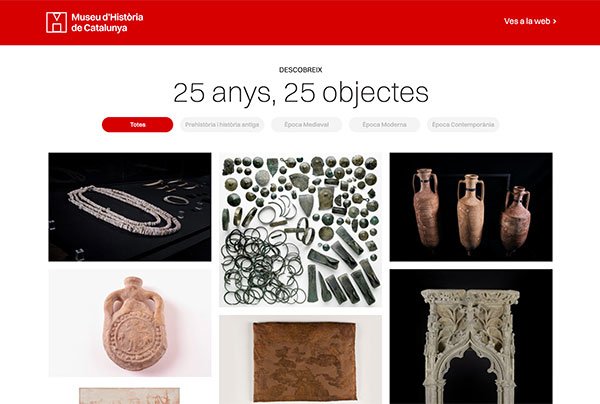

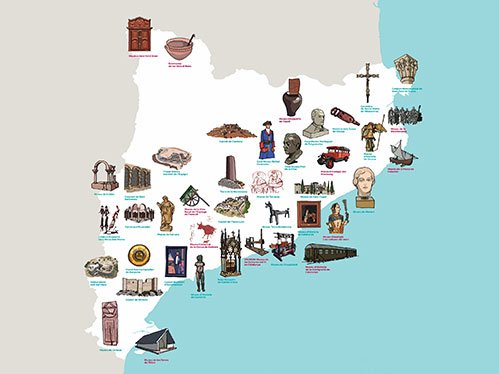

 Twitter
Twitter Facebook
Facebook



